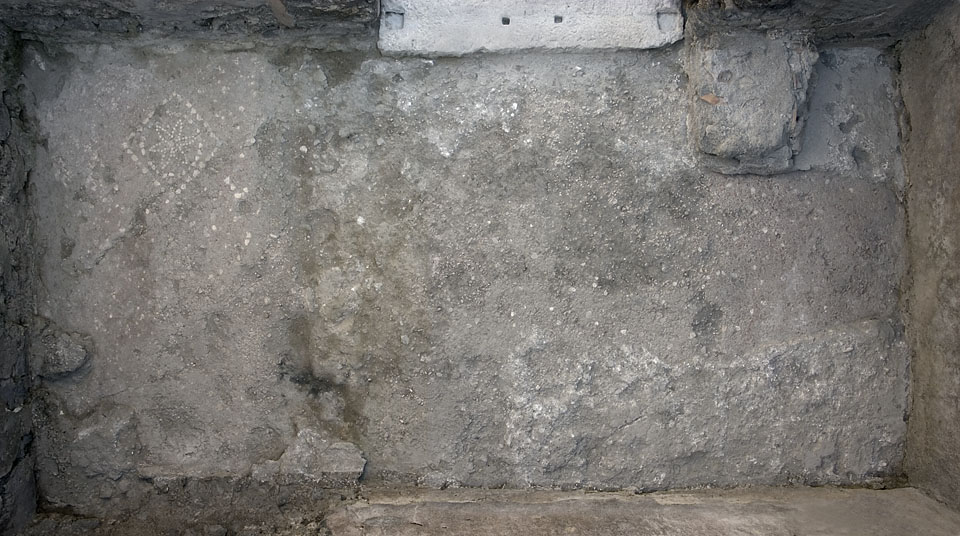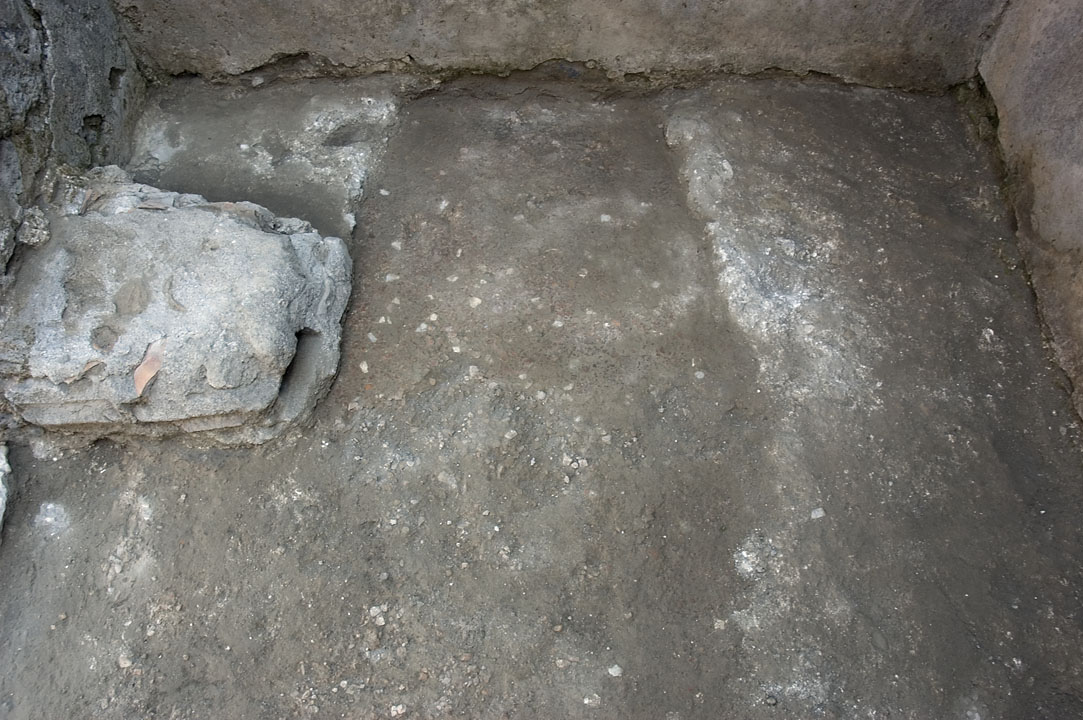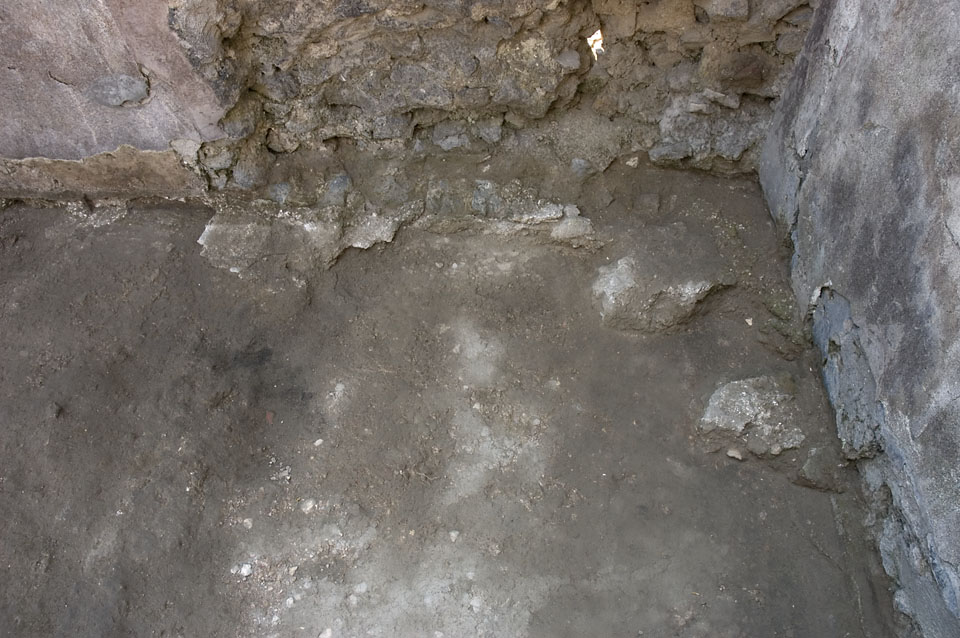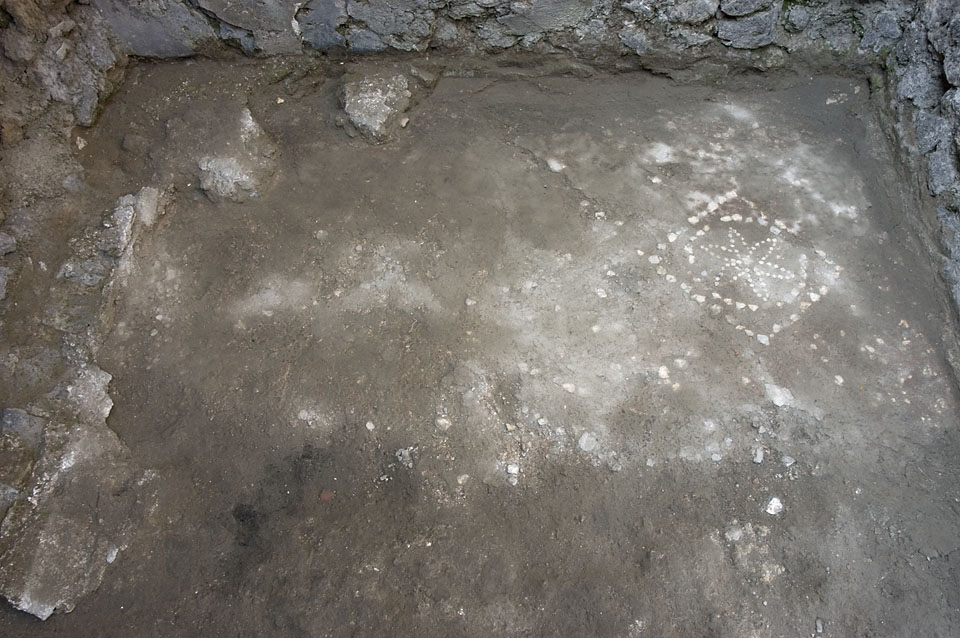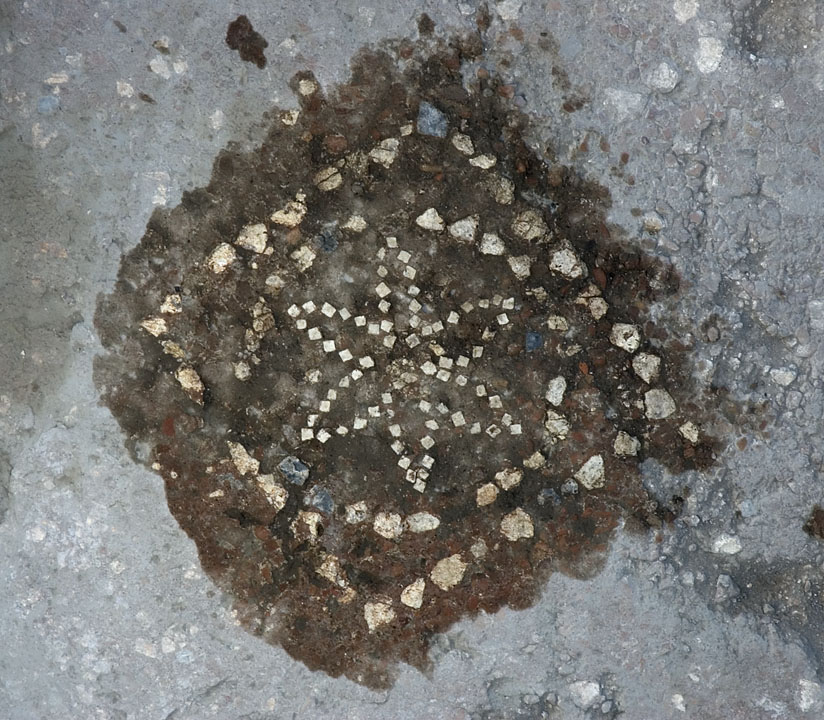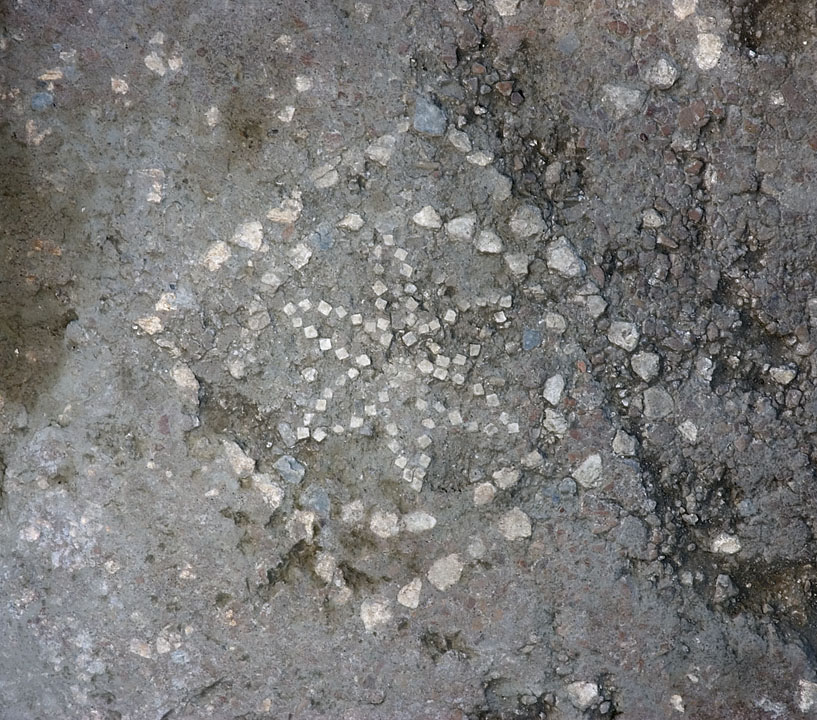Floor
Description
A. Karivieri & R. Forsell
The lowermost preserved floor is a cocciopesto floor with a design, made with white stones in the NW corner, consisting of an outer square 33x33 cm. Inside the square there is a circle, diameter 28 cm, and inside the circle, a six-petalled rosette. The cocciopesto floor has randomly set white stones in other parts of the room.
The second layer, above the cocciopesto is visible against the W wall, in the centre that seems to be gray lavapesta. In the central and E part of the room a black wall plaster is attached to the cocciopesto floor, but by the W wall the black plaster seems to be connected to a lavapesta floor above the cocciopesto. Above these layers there is a layer of mortar in the SW corner, against the niche in the SW part of the room, against half of the S wall, in the SE corner, and in the NE corner. In the SE and NE corner this layer is clearly a floor level.
A foundation with bricks, stones and mortar was built above this layer of mortar against the E part of N wall.
There is a clearly visible damaged part in S-N direction along the E edge of the niche, where the cocciopesto floor has been broken and where pieces of charcoal and ash were found as well as four game pieces (two of glass, two of stone), a piece of Campania ware, and two pieces of terracotta lamps (nozzle and piece of rim).
The cocciopesto floor belongs to the first phase of the room. The second, the gray lavapesta that covers the W edge of the cocciopesto cannot be connected to any wall decoration. The third layer in connection with the black plaster in the W edge of the room seems to belong to the same phase as the niche that was made in the W part of the room by remaking part of the S wall. In a later phase, a new floor level was made and parts of that pavement are preserved in S parts and the NE corner, and the small foundation for a staircase or a ladder in the NE corner was built above this pavement.

